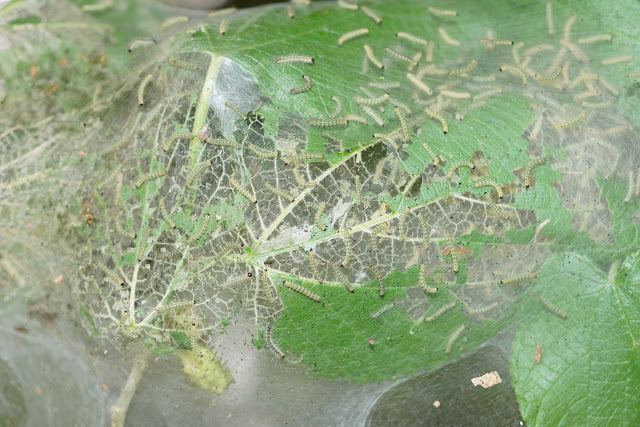Parasitoids may be among the smaller enemies that a caterpillar has, but they are also among the most insidious. When a female parasitoid (generally a small wasp or fly) finds a suitable caterpillar, it lays its eggs on or even inside the caterpillar. The parasitoid larvae then emerge from the eggs and proceed to feed on the caterpillar. What becomes of the caterpillar once the parasitoid invasion is complete? It may be mummified, vanish from inside a fuzzy shroud, or perhaps more strangely -- be left apparently unharmed.
 |
| A copper underwing (Amphipyra pyramidoides) caterpillar and recently emerged parasitoid wasp larvae. |
 |
| The slits that the wasp larvae emerged through are visible behind them. |
However, the caterpillar was hardly passive. When the parasitoid larvae were threatened by an approaching object, the caterpillar became surprisingly aggressive.
The parasitoids had left the caterpillar alive, but not at liberty. Though the caterpillar was no longer needed as food, it could still be manipulated into serving as the parasitoids' protector.
To be continued... but in the meantime, you can explore some more: Parasitoid Increases Survival of Its Pupae by Inducing Hosts to Fight Predators

















































